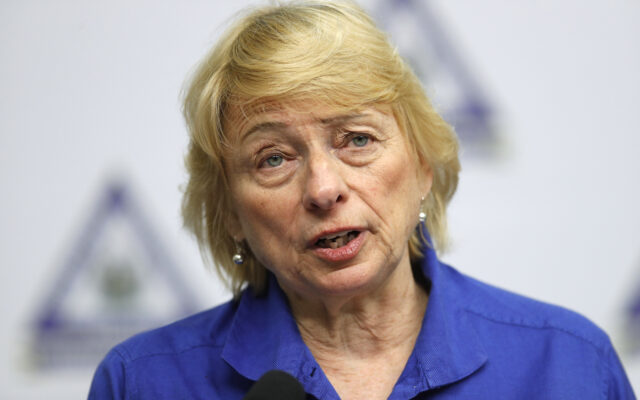
Janet Mills’ proposed budget includes historic investment in UMaine System
While Gov. Janet Mills’ recently unveiled $10.3 billion state budget proposal contains a significant subsidy increase for the University of Maine System, it doesn’t solve the schools’ underlying financial issues.
Mills’ proposal, which would be an important financial lifeline for the university system that’s facing millions more in budgetary gaps by 2027, is only part of what the campuses need for economic solvency, according to the system’s top financial official.
An overall increase of 7.5 percent over the next biennium is the highest state subsidy the university system has seen in decades, if the Legislature approves the budget.
“The investment that the governor has proposed is significant and will certainly help us bridge some of that gap,” said Ryan Low, the UMaine System’s vice chancellor of finance. “We still have a lot of difficult work to do on our side. We’ve started a lot of that work, and certainly will be continuing that over the next couple of months.”
The system opened a new year of operations in July needing to close an $18.8 million budget shortfall to have a balanced budget. Since then, the lowest enrollment the system has seen in recent memory has forced six of the seven UMaine system institutions to make mid-year multi-million-dollar budgetary cuts to close emerging gaps.
Those materialized gaps are the early onset of what officials said in July would likely be budget shortfalls that total $40 million by 2027.
Inside the governor’s proposed budget, the University of Maine System’s base state funding would increase 3 percent from $212 million to $220 million. From there, over the two-year state budget cycle, the system’s appropriation would increase another 4.5 percent.
That means the amount the state gives the system would go from $220 million to $230 million in the next fiscal year and then $239 million by the end of the biennium.
“If you take that base 3 percent [increase] and add in the 4.5 percent, it’s a 7.5 percent increase,” Low said. “A 7.5 percent increase in our budget is the largest increase that the system has (had) in decades.”
During a meeting with the University of Maine System’s trustees’ finance committee, Chancellor Dannel Malloy said the system requested more money — about a 6 percent increase in the system’s state appropriation — from the governor in her proposed budget, but that the system is nonetheless grateful for the boost.
“This is a break with the past and we are appreciative of the governor’s treatment,” Malloy said. “We did argue for more but we are very grateful for the filling of this gap that we had and the generosity that the governor has expressed to our institutions.”
While Mills’ proposed budget still has to make its way through the Legislature, financial leaders across the University of Maine System can figure out more accurately what their next fiscal year budget will look like, Low said.
“We’ll take a fresh look, now that we’ve got budget data. We’ll go into our allocation model and we’ll spit out individual numbers for each of our campuses,” he said. “We’ll start that in earnest.”
On the horizon, the university system as a whole will have to recruit and retain more students to bolster enrollment figures because the number attending each university drives significant revenue for the system.
The system earlier this year anticipated a 4 percent decrease in enrollment, but the official student count on Oct. 15 was down 5 percent from last fall, representing a decline of about 1,000 students. This fall’s enrollment across the state’s seven universities is 24,808 students.
“I will also note that we did make a good presentation with respect to the effect of the inflationary environment and how that has impacted Maine families, perhaps represented to some extent in somewhat disappointing numbers at some of our universities this past year,” Malloy said.
But, for now, Mills’ two-year financial plan will be a centerpiece of legislative debate. It comes during a time of tension in Augusta. Mills already struggled to pass a $473 million heating aid plan, which Senate Republicans held up for weeks.